Discover The Art Angle
The Art Angle

The Art Angle
Author: Artnet News
Subscribed: 912Played: 32,084Subscribe
Share
2019 ©
Description
A weekly podcast that brings the biggest stories in the art world down to earth. Go inside the newsroom of the art industry's most-read media outlet, Artnet News, for an in-depth view of what matters most in museums, the market, and much more.
340 Episodes
Reverse
We love to do deep dives into trends that we are noticing in painting and the trend of “Bordercore” was one of our best-loved from the year, so we decided to revisit it this holiday season. We take a look at the emergent trend in art which is wild and inventive takes on frames, suddenly front and center for many painters of the moment as a way to push new boundaries in painting.
Almost by definition, the frame of a picture is something that you are not supposed to notice.
But if you go to the art galleries to look at paintings now, you might get a very different sense of what a frame can or even should do. Weird and wild frames that very much draw attention to themselves seem to be having a moment.
Recently, Artnet writer and editor Katie White penned a piece titled “Bordercore: Why Frames Became the New Frontier in Contemporary Art,” in it, she writes:
A new wave of contemporary art is reconsidering the frame as a central character, one that is surreal, sculptural, and symbolic. Artists are using the border not just to contain, but to comment, disrupt, or extend the work beyond itself. This is driven by an embrace of more bespoke, historic artistic processes, but also, as a rebuttal to the superflat virtual age.
More and more, paintings have been appearing at fairs and in exhibitions with statement frames, after a long era of often-frameless display. If for previous generations, the frame was a liability that could detract from the cerebral, intellectual, and aesthetic experience of the canvas, artists today are creating frames that attempt to pull us back into bodily reality, a haptic experience of art.
In her essay, she looks both at the history of framing styles, and talks to a number of contemporary painters to figure out what is causing so many to treat something that was literally considered peripheral to what they do as very much part of the main attraction. This week she joins art critic Ben Davis on the podcast to discuss this new frontier in art.
Chris Kraus is one of the most well-known contemporary art writers. She is also an important taste-maker, co-editor of independent publisher Semiotext(e), which played a key role in introducing French theory to U.S. audiences.
But Kraus is probably best known today as a novelist. Her 1997 autobiographical novel I Love Dick became a buzzy literary reference in the 2010s, and a model for autofiction. It was even made into an Amazon show.
This fall, Kraus put out a new novel, titled The Four Spent the Day Together. It has a cryptic three-part structure that I think I should set up.
The first part focuses on a young woman named Catt Greene. Drawing heavily on Kraus’s own life, it describes a childhood growing up in Connecticut, being bullied, and dreaming of leaving the hardships of her depressing lower-class life behind through experiments with drugs and sex, activism and art.
The second part focuses on Catt many decades later, now an art critic and novelist who has found unexpected success with a novel called I Love Dick, which is being made into an Amazon show. But it also focuses on the character of Paul, Catt’s husband, an addiction councilor who struggles with addiction himself, which slowly tears the two apart.
Like the real-life Kraus, the character Catt Greene owns properties in Albuquerque, New Mexico, which she rents out. Like Kraus, Greene is attacked by online critics in the late 2010s for being a landlord.
This leads to Part 3 of the book. Feeling demonized, and that her own life is running out of raw material to turn into literature, Catt Greene finds herself drawn to investigating a real-life murder in bleak rural Minnesota. The character of Catt Greene, and Kraus through her, attempt to reconstruct the grisly facts of the case, and try to make sense of it.
That’s probably enough set-up. Chris Kraus joins national critic Ben Davis to talk about her writing, her life, and her new book.
We are back this week with our monthly edition of the Art Angle Round-up, where co-hosts Kate Brown and Ben Davis are joined by a guest to parse some of the biggest headlines in the art world. As we close out a busy calendar year—and for the last roundup of the year—we are reviewing all of 2025 and the trends, themes, and stories that defined it with Andrew Russeth, Artnet Pro editor and art critic.
It's been a whirlwind of a year. We take a look at the art market, where slumped sales, gallery closures, and existential dread dominated the business up until November, when New York’s fall auctions saw the narrative take a turn, something that seemed to sustain across the primary market at Art Basel Miami Beach. We discuss what this could mean for 2026.
In the realm of politics, Trump 2.0 began, which ushered in a wave of policy shifts, cultural tensions, and uncertainty that reverberated across the art world, from federal arts funding to museum governance and international cultural exchange. We also ask whether the art world did finally go post-woke, a question Davis posed at the top of the year, the return of digital art, and the ongoing power of red chip art.
And it was a year of profound transformation for institutions, which are facing a multi-front crisis due to the changing expectations from the public, exploding costs, and a shifting political landscape. And, of course, there are also some fun stories in the mix, because this is the art world, a place that is known to be rather unusual.
Millions of people know The Artist's Way. First published in 1992, the book began as notes for a class that its author, Julia Cameron, taught on creative self-discovery or, as she sometimes prefers to call it, “creative recovery.” It found a huge audience, and today you can find Artist’s Way groups all over the world.
Cameron’s original The Artist’s Way offered a 12-week path towards overcoming artistic blocks. The book was subtitled “A Spiritual Path to Higher Creativity,” and it spoke of plugging into a current of what she called “spiritual electricity.” But her techniques were practical and easy to grasp. Rituals from The Artist’s Way such as starting your day by writing out three pages of unedited text, known as "doing your Morning Pages," have become part of the creative process of many, many artists, musicians, and writers.
More than three decades after its publication, The Artist’s Way continues to find new followers, and even got a new bump of popularity during the 2020s. And Julia Cameron herself has returned this year with The Daily Artist’s Way, offering a new way in for fans. Cameron agreed to speak to national critic Ben Davis to revisit the origins of her famous method and how she’s tweaking it now in this new book.
You've been hearing a lot about the Louvre lately. Last month, thieves broke into the Paris Museum in broad daylight when the museum had just opened and made off with eight pieces of royal jewelry. The spectacular heist captured the world news cycle and the imagination of the internet. But why are people so obsessed with the Louvre in general? What is it about this museum in particular? We decided to re-air a recent episode where we look at the enigmatic institution and dive into the many secrets and stories that it holds.
The Louvre is among the largest, most-visited, and best-known museums in the world, and for nearly too many reasons to count. It’s home to some of the most celebrated works of art, from the Venus de Milo to the Mona Lisa. Its blended contemporary and historic architecture is astounding. And it also has a truly formidable past, stretching back through time, well before the building became a museum in 1793.
An institution and collection that has been a quiet witness to so much history and change is bound to have stories to tell. Elaine Sciolino, contributing writer and former Paris bureau chief for the New York Times, has captured many of these stories in her newest book, Adventures in the Louvre: How to Fall in Love with the World’s Greatest Museum, which came out in April with Norton & Company. Sciolino is acclaimed for her chronicles of French history, and she’s the author of the New York Times bestseller The Only Street in Paris, The Seine, and La Seduction. And at the Louvre, she spoke to everyone, from the guards to the lead curators, and received unprecedented access to rooms I didn’t even know existed.
Senior editor Kate Brown caught up with Elaine, who is based in Paris, to discuss the enigmatic and ever-enchanting Louvre, and what she learned from her exploration of its many halls, backrooms, and basements.
Last year, Jack Hanley—one of New York’s most beloved and idiosyncratic gallerists— announced he would close his gallery after 37 years in business. The news landed with both surprise and sadness: Hanley has always been a disruptor, a dealer with a sharp eye for fresh talent, who followed instinct over market logic. A gem of the New York art scene and beyond.
Over the decades, Hanley gave early shows to artists like Günther Förg, Christopher Wool, Sophie Calle, and Christian Marclay—and all of that was long before they became art-world names they are now. He helped define the San Francisco scene of the 1990s, championed artists who blurred lines between high and low and made challenging work; and more recently, even gave the digital artist Beeple his first-ever gallery show. As a former Grateful Dead roadie, avid orchid grower, art fair founder, and having run galleries in several cities, he’s seen a lot. And played music with more than a few art dealers.
Hanley joins senior editor Kate Brown to discuss transformation and continuity in the art world and art industry. We talk about what’s changed, what hasn’t, and what keeps art interesting, even as the market has grown more absurd.
Before the idea of feminism took shape, there was what writers once called “the woman question.” The phrase comes from the querelle des femmes—a centuries-long debate in Europe about women’s rights, intellect, and place in society. One of the first to take it up was Christine de Pizan, the Italian-French court writer who, in 1405, published The Book of the City of Ladies. At a time when most women were excluded from education and public life, de Pizan challenged misogyny head-on, laying some of the earliest groundwork for what we now understand as feminist thought.
That question—what is a woman’s place in culture and history?—has echoed ever since. In 1971, the art historian Linda Nochlin famously reframed it by asking: “Why Have There Been No Great Women Artists?” We have a clear answer: there had been great women artists all along, but their stories were often overlooked, dismissed, or erased.
A new exhibition at the recently opened Museum of Modern Art in Warsaw hones in on that conversation. "The Woman Question: 1550–2025," curated by Alison M. Gingeras, gathers nearly five hundred years of women’s creative production—from Renaissance pioneers like Sofonisba Anguissola and Lavinia Fontana, to Baroque heroines such as Elisabetta Sirani and Artemisia Gentileschi, and contemporary artists including Betty Tompkins and Lisa Brice. With more than 200 artworks, the exhibition focuses on how women saw and depicted themselves and the world, and how the represented power, resistance, desire, and violence. Through portraits, allegories, and bold depictions of female experience, these artists reveal how women have long claimed creative agency despite the structures built to contain them.
On this episode of The Art Angle, Gingeras joins senior editor Kate Brown from Warsaw, Poland, to talk about early women art stars, recent rediscoveries, and why, after all this time, we still need all-women exhibitions.
Nigerian modern art is having a moment. In London, the Tate has opened a critically acclaimed exhibition, called “Nigerian Modernism,” featuring more than 50 artists who experimented with vibrant new styles in the mid 20th century in the giant and influential West African nation. More generally, the artists of this era have become more recognized outside of their home country in recent decades, from early figures who laid the groundwork like Aina Onabolu to a towering figure of the 1950s like Ben Enwonwu to younger innovators of the 1950s and 1960s such as Uche Okeke and Demas Nwoko, with many more important names to know and bodies of work to discover.
This was an earth-shaking time in Nigerian history, when a near-century of British colonial domination was shed and the many problems of a fragile new independent nation had to be faced. These artists were part of figuring out how to express that new sense of identity in images. But their art was not always so celebrated, sometimes dismissed as derivative of European art.
The scholar and curator Chika Okeke-Agulu has been important to the recent re-estimation of Nigeria’s art history. He teaches at Princeton, and is the author of, among many other things, of Postcolonial Modernism: Art and Decolonization in Twentieth-Century Nigeria, a book that personally excited me very much when I first found it. With the Tate show drawing a fresh wave of interest, art critic Ben Davis thought Okeke-Agulu would be an excellent guide to what this art was, what it meant, and why it still demands attention today.
It’s been a really dizzyingly busy October, and as is customary, we are ending the month by talking about three of the biggest topics. We have a palette of stories that gives a sense of how head-spinning it was.
First, we are going to talk about one of the biggest stories in the world, the $102 million jewel heist at France’s Louvre museum, which has transfixed the public.
Second, it’s been a busy few weeks in the European art world on top the Louvre heist, with both Art Basel Paris and Frieze London. Our reporters were there so we are going to check in on what the news from the art biz is.
And third, we’ll talk about the new Sora 2 app, an all-A.I. TikTok clone that isn’t public yet but is at the top of the app charts. I got a chance to try it out and looked at it. An artist I know called it “the death of video art.” Is it that bad or that good? What does it mean for art? We’ll talk about that too.
Ben Davis is joined as is custom by Artnet’s senior editor and Art Angle co-host Kate Brown, in Berlin, alongside European news reporter Jo Lawson-Tancred.
One of the things Ben Davis likes about contemporary art is that he is always learning new things, because art spaces are always bringing new ways of making and thinking into the mix. Recently, unexpectedly, this has included magic. Specifically, Jeanette Andrews.
Andrews began her career as a professional magician, but now works mainly in museums, creating a body of work that’s something new, exploring magic as an expressive medium. Her works usually bring together the science of perception, the intrigue of coded messages, and the history of illusion as a craft.
Andrews has performed parlor tricks dreamed up by an algorithm to investigate human versus machine creativity; re-performed the earliest documented magic trick from 1584; and made art inspired by the use of sleight of hand in actual CIA espionage in the 1950s. And her explorations of this unusual creative space are actually getting their first dedicated museum exhibition soon, at the Elmhurst Art Museum in Illinois—that’s a little bit of news we’re breaking on the Art Angle, as a matter of fact.
Earlier this month, Ben went to see one of Jeanette Andrews’s most recent commissions in Boston, "The Attestation," at the MIT Center for Art, Science, and Technology. He describes it as a hybrid of stage magic and social experiment.
The questions of why, if, and how magic fits in in the museum seem fascinating to me, so he was happy that Andrews agreed to talk about how she pulled off her biggest trick of all: making magic art.
Art World Infamy is a special series from the team behind The Art Angle, investigating the scandals and schemes that have rocked the art world. In the first chapter, told over four episodes, senior market reporter Eileen Kinsella unravels the rise and fall of dealer Inigo Philbrick.
After months on the run, U.S. authorities finally tracked Inigo Philbrick to a remote island nation in the South Pacific: Vanuatu, a tropical archipelago more than 9,000 miles from London and a world away from the art fairs and galleries where he once thrived. What followed was a scene straight out of an action thriller: a dramatic arrest, a secretive extraction by private jet—at the height of the pandemic, no less—and a return to face justice, along with tens of millions in claims from furious investors and collectors.
In this fourth and final episode, we uncover what happened in the months after Philbrick disappeared and how his high-flying double life came to an abrupt end. Law enforcement officials and art-world insiders weigh in on how they found him, what it takes to prosecute art fraud—and whether a man like this could ever make a comeback in the art world.
Manga is surely one of the most beloved and influential types of culture in the world. And while there’s long been a thriving international fandom around Japanese graphic novels, in the last 5 years in particular, there’s been a huge surge of popular interest, with manga impossible to miss in book shops and comic stores—and now in museums too.
The big exhibition “Art of Manga” at the De Young Museum in San Francisco is proving to be a real event. As the title suggests, the show looks at manga not just as a cultural phenomenon but as visual art, digging into the history of the medium and celebrating its dynamic graphic and storytelling style.
Specifically, “Art of Manga” focuses on 10 Japanese creators, selected to show the breadth of what manga has meant, and can be. They are: Akatsuka Fujio, Araki Hirohiko, Chiba Tetsuya, Oda Eiichiro, Tagame Gengoroh, Takahashi Rumiko, Taniguchi Jiro, Yamashita Kazumi, Yamazaki Mari, Tanaami Keiichi, and Yoshinaga Fumi.
What is the connection of manga to Japanese art history? What does a museum have to add to the story of manga? And what can the popularity of manga, in turn, teach museums? The show’s curator, Nicole Coolidge Rousmaniere, agreed to talk to us about all of this.
Art World Infamy is a special series from the team behind The Art Angle, investigating the scandals and schemes that have rocked the art world. In the first chapter, told over four episodes, senior market reporter Eileen Kinsella unravels the rise and fall of dealer Inigo Philbrick.
After a bombshell $13 million lawsuit from angry collectors, Inigo Philbrick vanished. What followed was a cascade of international claims from clients who had entrusted him with millions, drawn in by his supposed Midas touch in the art market.
From art fairs to gallery openings to gala dinners, the question on everyone’s lips was the same: Where’s Inigo?
In this third episode, we examine the fallout from Philbrick’s fraudulent deals, and the frenzy that erupted in the art world after his sudden disappearance.
Museums across the globe are facing unprecedented challenges. In the West, public funding is shrinking, politics is creeping into the galleries, and institutions are asking hard questions about how to stay relevant to their donors and their publics. In an era of increasing scrutiny and diminishing returns, even the most established museums are questioning what long-term sustainability means.
Meanwhile in China, the private museum boom that once symbolized cultural ambition and real-estate wealth is cracking, and some of these lavish new museums are having to close or scale back.
In short, museums are in crisis.
Senior editor Kate Brown recently worked with Margaret Carrigan, our news editor and host of the Art Market Minute, to edit a four-part series examining this issue from different angles.
Margaret joins her on the podcast to talk about the takeaways and the financial, political, and ethical pressures reshaping museums. We also discuss whether this breaking point could be the start of a new era of reinvention.
Art World Infamy is a special series from the team behind The Art Angle, investigating the scandals and schemes that have rocked the art world. In the first chapter, told over four episodes, senior market reporter Eileen Kinsella unravels the rise and fall of dealer Inigo Philbrick.
Long before headlines exposed his $86 million fraud, Inigo Philbrick was just another ambitious intern at one of the most powerful galleries in the world.
Then a student at Goldsmiths College, Philbrick caught the attention of legendary dealer Jay Jopling and landed a coveted internship at White Cube—the gallery that defined 1990s London, and launched the YBAs (Young British Artists) including Damien Hirst and Tracey Emin.
In this second episode, we explore how Philbrick so quickly ingratiated himself into the upper echelons of the art world that, within just a few years, he was running his own eponymous gallery. With hindsight, were there early warning signs of what was to come that the art world failed to see?
Art World Infamy is a special series from the team behind The Art Angle, investigating the scandals and schemes that have rocked the art world. In the first chapter, told over four episodes, senior market reporter Eileen Kinsella unravels the rise and fall of dealer Inigo Philbrick.
What happens when you mix staggering sums of money with opaque financial deals in the high-stakes world of art?
Welcome to Art World Infamy, a new podcast mini-series about the scandals and larger-than-life figures that have gained industry notoriety. We begin with a four-part investigation into how Inigo Philbrick climbed to the top of the art world—and how it all unraveled.
Once hailed as a wunderkind dealer, Philbrick leveraged personal connections and the soaring contemporary art market to build what looked like an unstoppable career. But his fortunes hinged on deception, and once uncovered, the losses were staggering.
In this opening episode, we’ll trace the convoluted deals that propelled Philbrick to the top, and would eventually lead to a spectacular collapse that left collectors and investors out of tens of millions of dollars.
It’s September, and the art world is back to business. In this month’s episode of the Art Angle Round-Up, we’re diving into the stories making headlines from Buenos Aires to New York—and even into the fantastical worlds of Frank Frazetta.
We start with a remarkable development out of Argentina, where a couple has been charged with concealing looted art. Then, we turn to the gallery scene, where art superstar Jeff Koons is once again on the move, returning to Gagosian after ditching Pace. And finally, we celebrate a record-breaking sale in the fantasy art market: Frazetta’s iconic Conan the Barbarian painting Man Ape fetched $13.5 million, more than doubling his previous auction record.
Joining Kate Brown to unpack these stories is co-host Ben Davis, along with returning art market expert Eileen Kinsella.
We’re thrilled to be able to say that the latest edition of Artnet's Intelligence Report: The Mid-Year Report 2025, has been published. It's free for all—head to Artnet News to download it as a handsome PDF.
Within its covers, you'll find a bounty of information on the auction world and the art industry, which artists have been having a great year, how various countries' markets are performing, and a great deal more. Surprises abound from the Old Masters to the ultra-contemporary. You'll also find interviews with power players from the field, like the Guggenheim Museum's chief, Mariët Westermann, and the widely admired, now retired art dealer, Jack Hanley.
And then there is the cover story by our ace columnist, Katya Kazakina. It's titled The Storm Hits the Art Market: Who's Getting Swept Away? It looks at recent upheavals in the art industry with galleries closing left and right, and everyone spent their summer thinking about how to run an art business now. There are tales of crash-outs and heartening new models; there's something for everyone. Artnet Pro editor Andrew Russeth speaks with Katya about her reporting after she pounded the pavement at openings for exhibitions all over New York City.
Fans of the Art Angle know our monthly Art Angle Round-Up, where Kate Brown and Ben Davis are usually joined by a writer to talk about three topics in art. For the early September week of art fairs in New York, we decided to mix it up with an experiment: a live edition of the Art Angle Round-Up, at Independent 20th Century.
Our guest was the curator Matthew Higgs. He’s the director of storied New York alternative art space White Columns; founding curatorial advisor to Independent; and—I’m really not just saying this—someone who's been on my shortlist of people to have on the show for a long time. Higgs is one of the most thoughtful observers of the art scene that you could to have a chat with.
The house was packed for the live Saturday recording. Of course, we know that people listen to the show—but to see people actually turn out and to hear from listeners who have thoughts about it and want to talk about art and toss around ideas was very exciting. So, a big thank you to everyone who joined us in the audience.
And of course thanks Independent 20th Century, and to Matthew for a lively and serious conversation.
Most of us can agree: we are living through a cultural crisis. It doesn’t come from a single source—it isn’t just algorithms, aesthetics, politics, or the economy. It’s the convergence of all these forces, and beneath them, the erosion of institutions that once anchored collective life. Over the past decade, digital platforms, like social media, promised to be a new kind of connective tissue—a democratizing force to replace more slow-moving institutions. But while platforms have transformed our economies and society, they’ve also hollowed out the very structures that once gave us shared ground.
Mike Pepi has long been a sharp voice in this particular debate. Straddling both the tech industry and the worlds of art criticism and cultural theory, he brings a rare perspective. His writing, which has appeared in Frieze, e-flux, Artforum, and The Brooklyn Rail, also takes the form of a compelling new book called Against Platforms: Surviving Digital Utopia that was published earlier this year. In it, Pepi dismantles some of Silicon Valley’s most enduring myths, and it’s a bracing argument about what we have lost and what’s at stake as we hand over so much power, diminishing along the way some of our core institutions. But he also looks at how we might begin to rebuild them. For the art world in particular, the implications of Pepi's ideas are profound.



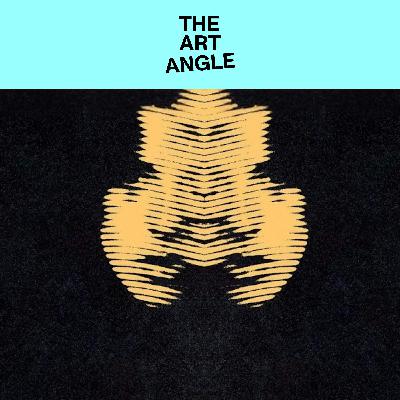

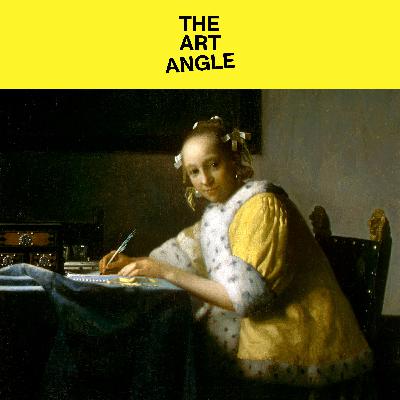
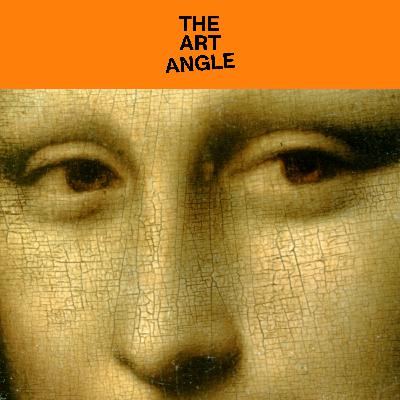


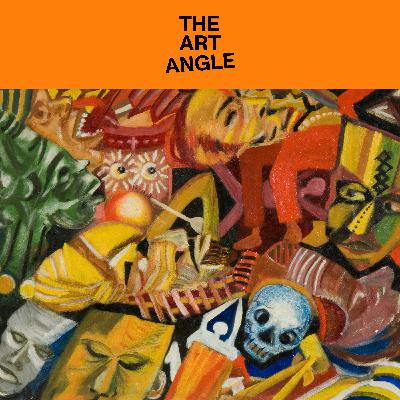
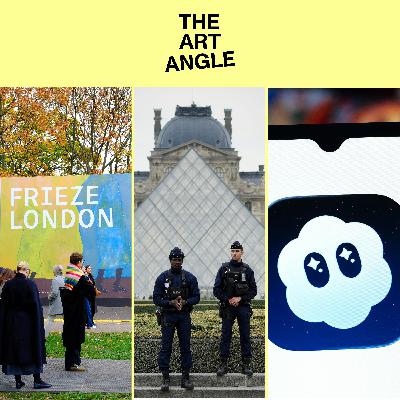







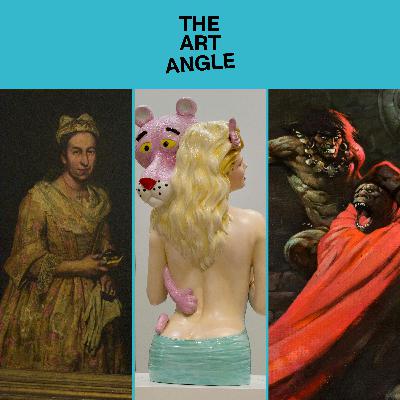
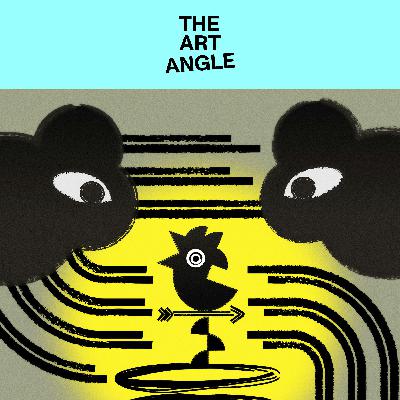
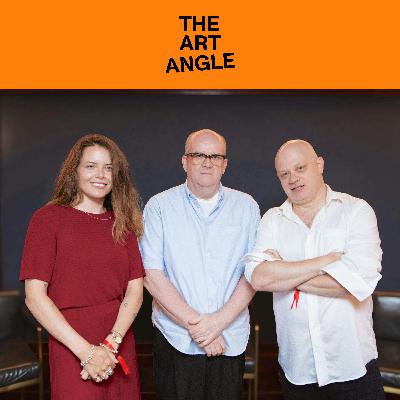




thank you